Looking back at the first year of BrightnESS²
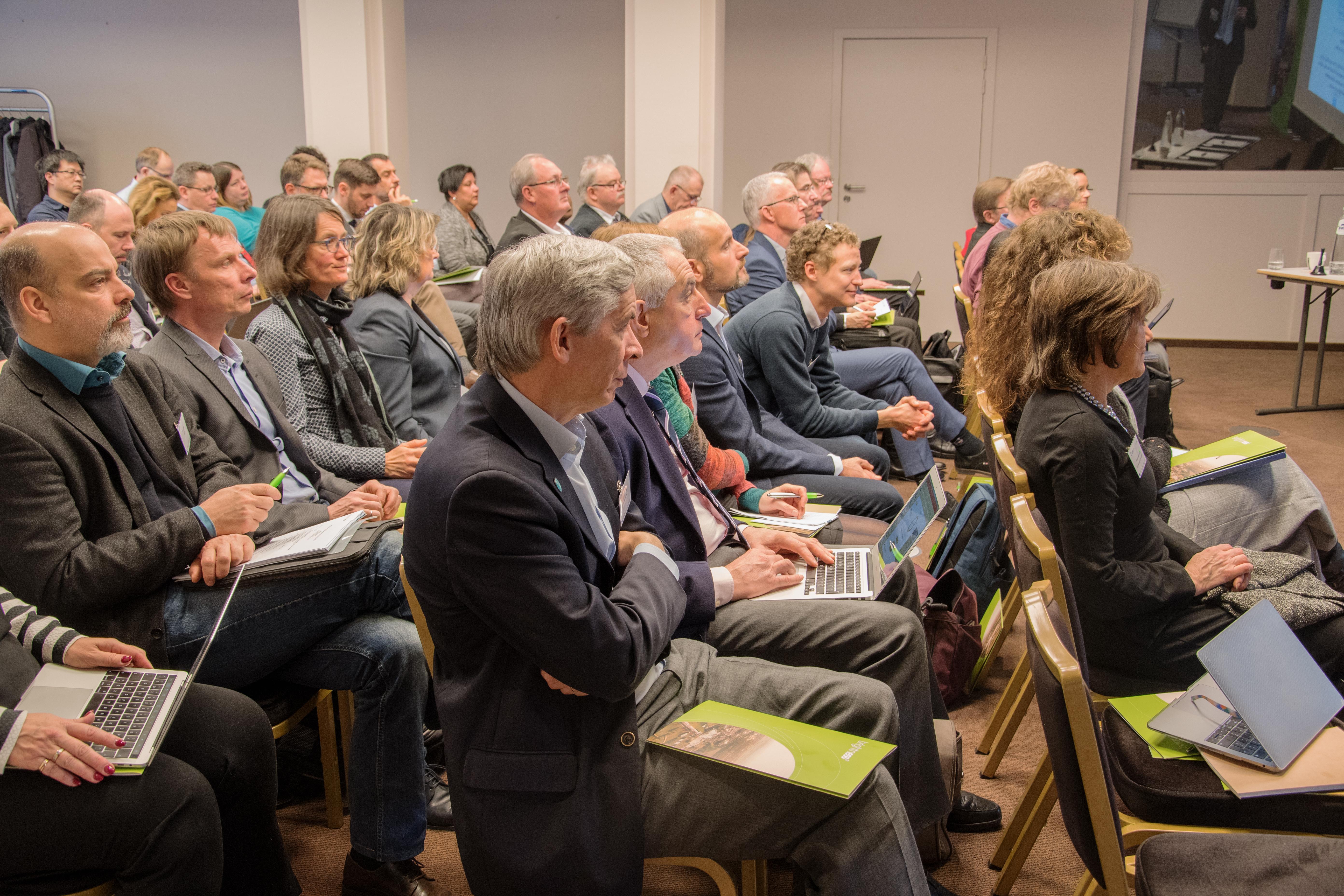
BRUSSELS—Around 60 participants in the Horizon 2020 BrightnESS² project met in Brussels on February 12 to review the progress made in 2019. The three-year project, which launched in January 2019, is a complex, integrated collaboration across 16 European and South African institutions that in its overall design aims to promote the long-term stability of Europe’s world-leading neutron science community and that of the European Spallation Source (ESS).
The €5 million European Union-funded project is broken out into five work packages that both directly and indirectly support the development of ESS, both as a construction project and as one of Europe’s most ambitious Big Science facilities.
Bringing together the European neutron science community
One of the foundational activities that BrightnESS² supports—and has kept at the heart of its consortium from early in the project’s application process—is the newly formed League of advanced European Neutron Sources, LENS. LENS is an umbrella alliance of nine European neutron sources organised to promote strategic actions across all areas of concern, including strategy and funding, technical and scientific developments, data management and user access. A key BrightnESS² project deliverable is the development of a common roadmap and implementation strategy for future neutron capability across all of Europe.
“BrightnESS² supports LENS through its member facilities because at the centre of each of the B2 project’s work packages is the imperative to nurture the whole of the European neutron community,” said BrightnESS² Project Coordinator Ute Gunsenheimer. “Each facility, including ESS, can only thrive within a coherent and healthy ecosystem in which all of the major facilities are helping one another to succeed by aligning their strategic actions.”
BrightnESS² counts eight of the LENS founding member facilities among its consortium, and the project’s support has seen LENS move quickly from a concept to a broad-based operational organisation that has embedded many of BrightnESS²’s deliverables into its working groups. To highlight the relationship between the two, BrightnESS² sponsored the LENS Colloquium: How neutrons contribute to mission-based research, which was held nearby in Brussels the day before the BrightnESS² meeting. The gala event featured both neutron scientists and European Commission representatives on the same stage, putting the two directly in conversation.
ESS Director for Science Andreas Schreyer co-chairs BrightnESS² work package 2, together with Institut Laue-Langevin (ILL) Associate Director Mark Johnson and European Neutron Scattering Association (ENSA) Vice-Chair Lambert van Eijck. Schreyer outlined the extensive BrightnESS² support for LENS throughout 2019, while it moved from an organisation existing mostly on paper to an operational one involving personnel from all nine member facilities working in collaboration.
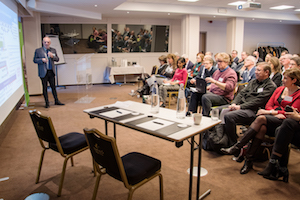 |
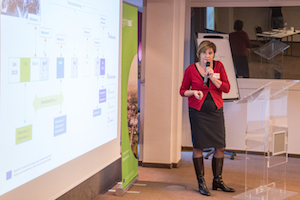 |
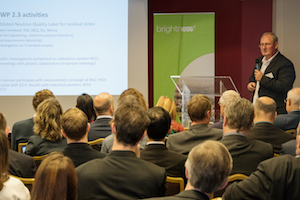 |
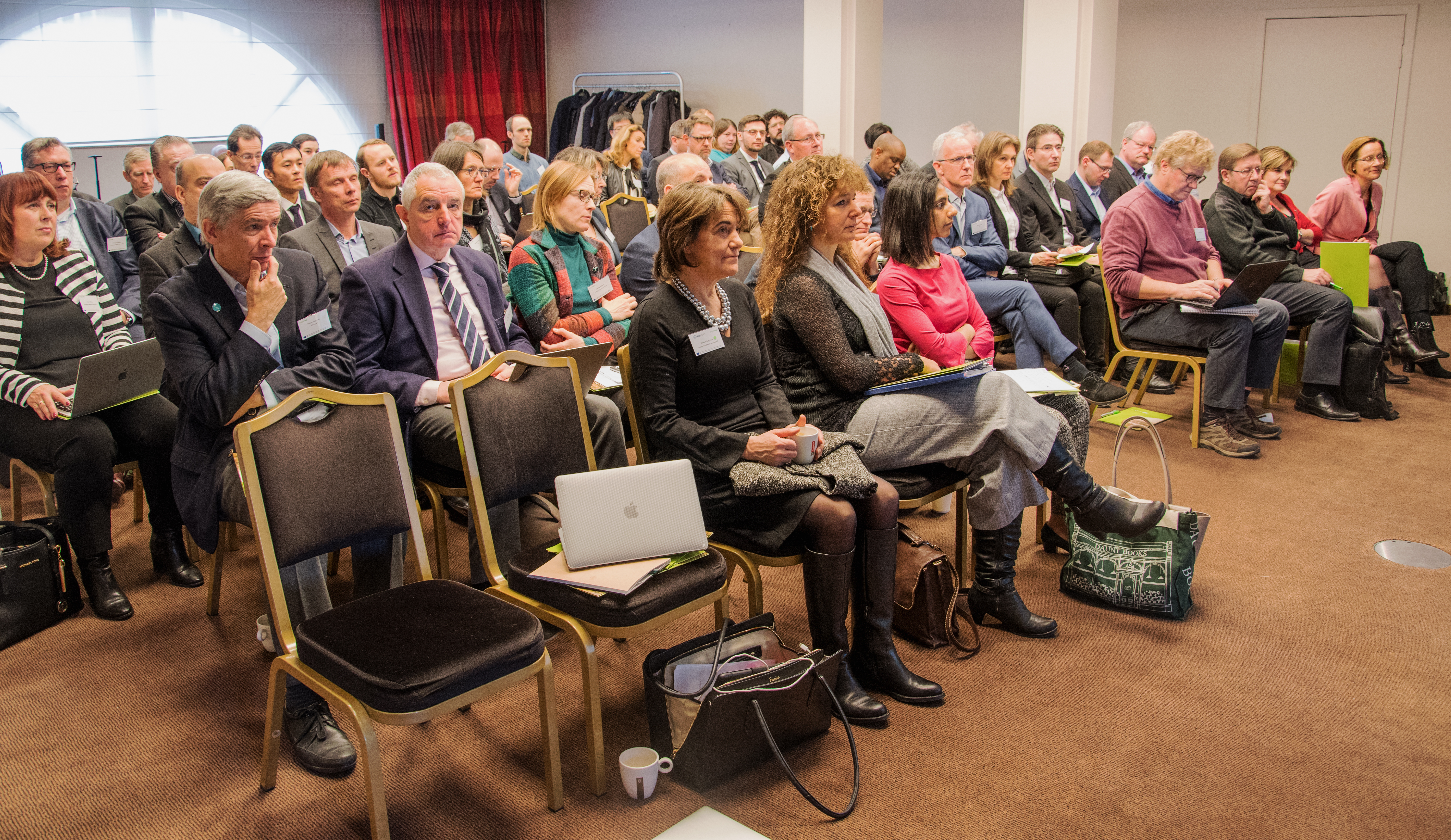 |
| Clockwise from top left: John Womersley (ESS), Margaret Armstrong (ESS), BrightnESS² participants, and Andrew Venter (Necsa). PHOTOS: Lenka Petková/ESS | |
Johnson, who is also the science director at ILL, detailed the scientific progress made on two pilot projects intended to increase cooperation and efficiencies across neutron sources. One of these is intended to establish a “Neutron Quality Label” for engineering materials that is valid from instrument to instrument and across different facilities. The second is a collaboration intended to streamline the production of deuterated molecules that enable the life sciences to make better use of neutron instruments in Europe. Together, the pilots will help to set a standard for scientific and technical collaboration across facilities.
Van Eijck, who is a neutron scientist at the Technical University of Delft, showcased ENSA’s work-in-progress to update facilities’ knowledge about their users and the scientific needs of the community as a whole. Using Natural Language Processing, the neutron users organisation will mine tens of thousands of scientific publications in order to establish a comprehensive picture of the global community of scientists using European neutron facilities. BrightnESS² is the first EU project in which ENSA has participated as a beneficiary, and it has served to foster a systematic working relationship between the 7,000-strong user organisation and LENS.
In-Kind, Industry and Innovation
The BrightnESS² project’s in-kind contribution management work package was presented by its chair, ESS’s Mauro Zambelli, head of the in-kind group. The unprecedented scope of the ESS in-kind model has necessitated the creation of whole new management processes that continue to evolve.
With over 85% of the roughly €500 million of contributions now covered by signed documents, the focus is on the implementation phase—the manufacturing, installation and commissioning of the many technical parts of ESS. To highlight one aspect of the ESS in-kind framework, Zambelli demonstrated to the meeting participants how BrightnESS² is assisting ESS’s many in-kind partners with the documentation and verification processes required to meet ESS Quality Standards.
Jimmy Binderup Andersen, on behalf of the ESS Strategy Directorate, catalogued the progress made in the BrightnESS² work package for Innovation & Industry, where the focus is on bridging the all-important gap between the two. Shortening the lag time between neutron research outputs and their application by industry begins with strengthening existing networks—such as the ESS Industrial Liaison Officer network—that connect researchers with both public and private enterprise. Another key activity for the work package is to implement the ESS Innovation Strategy through, for example, harvesting innovations that have come out of the ESS project and preparing the facility for industrial users.
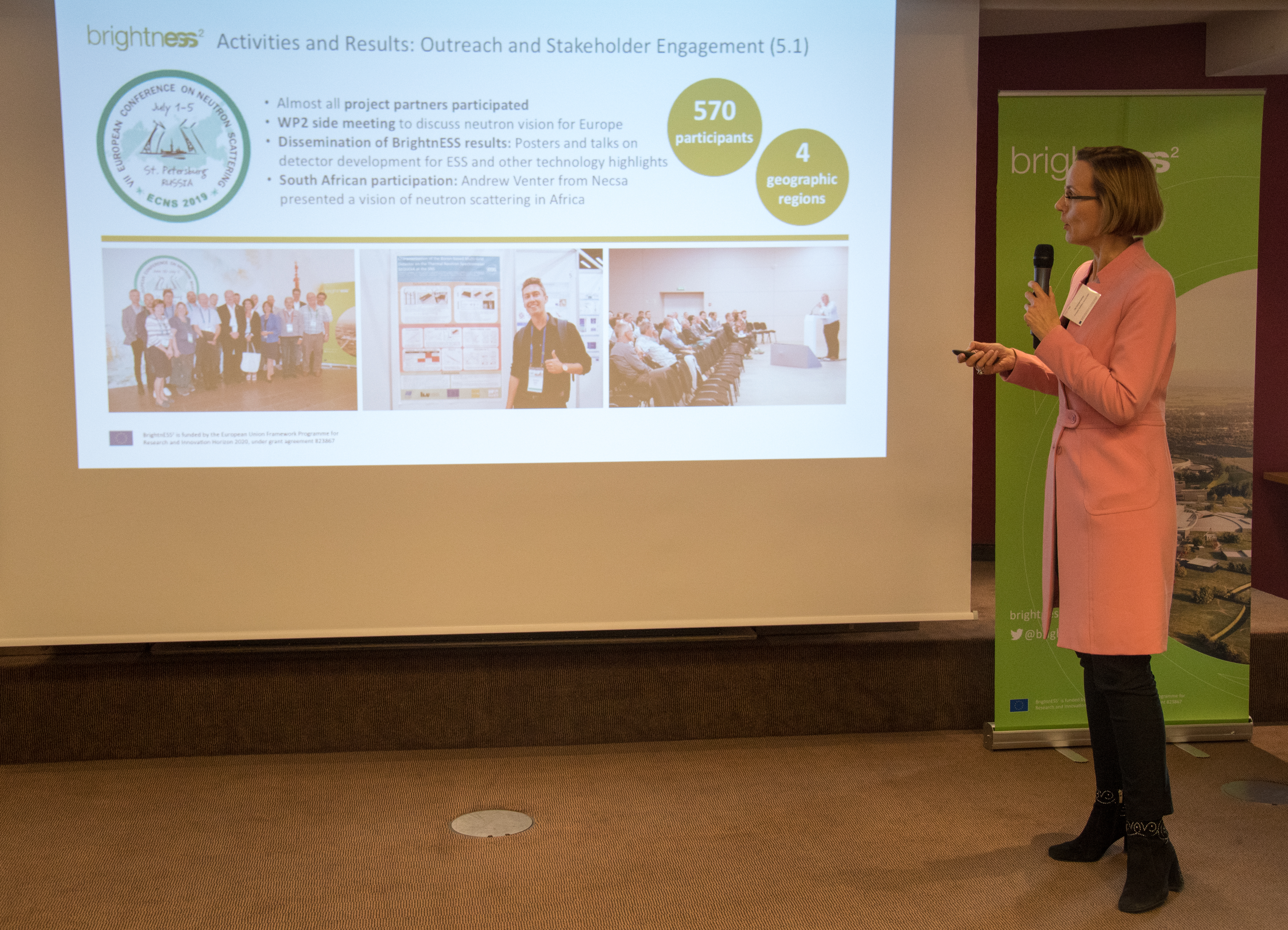 |
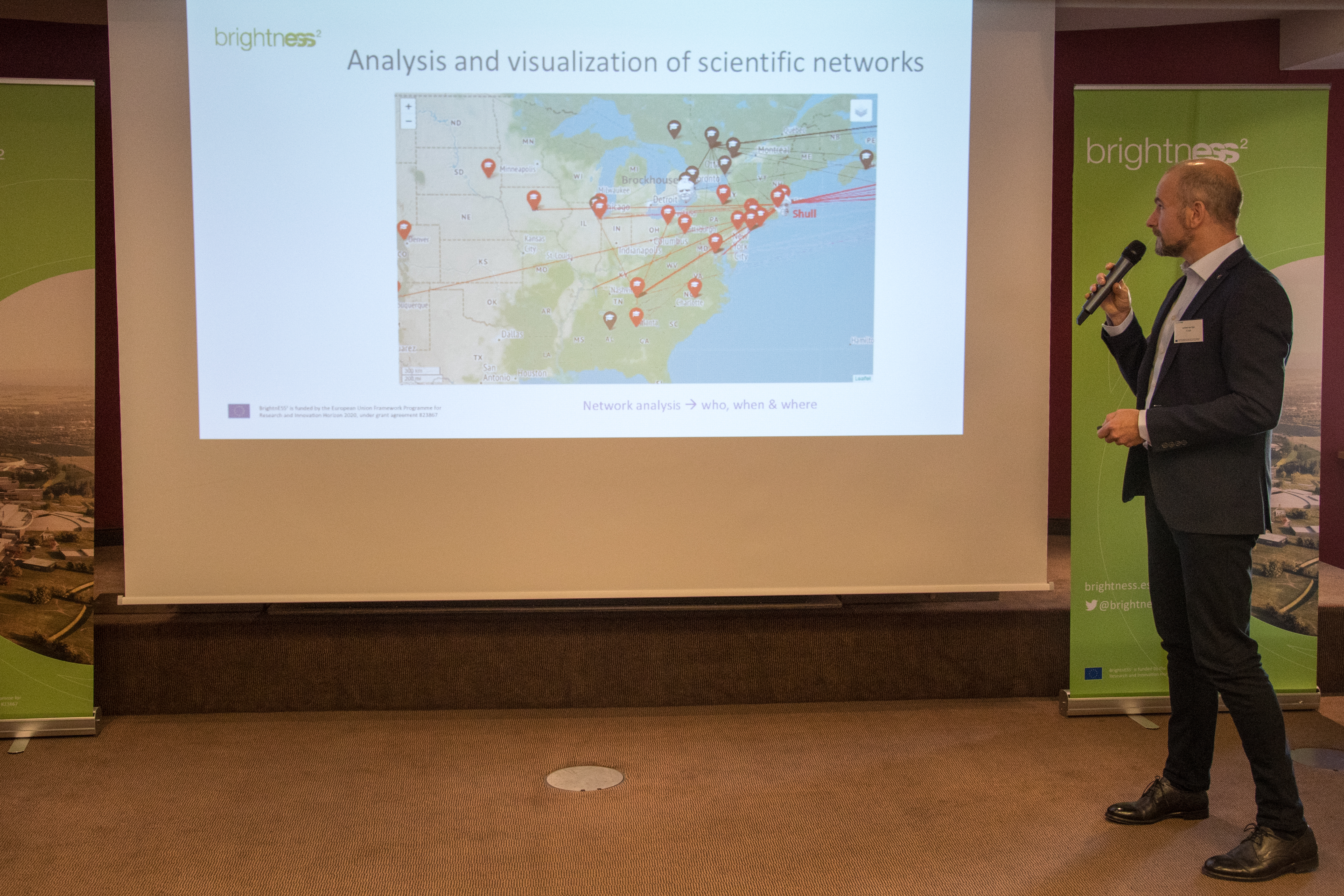 |
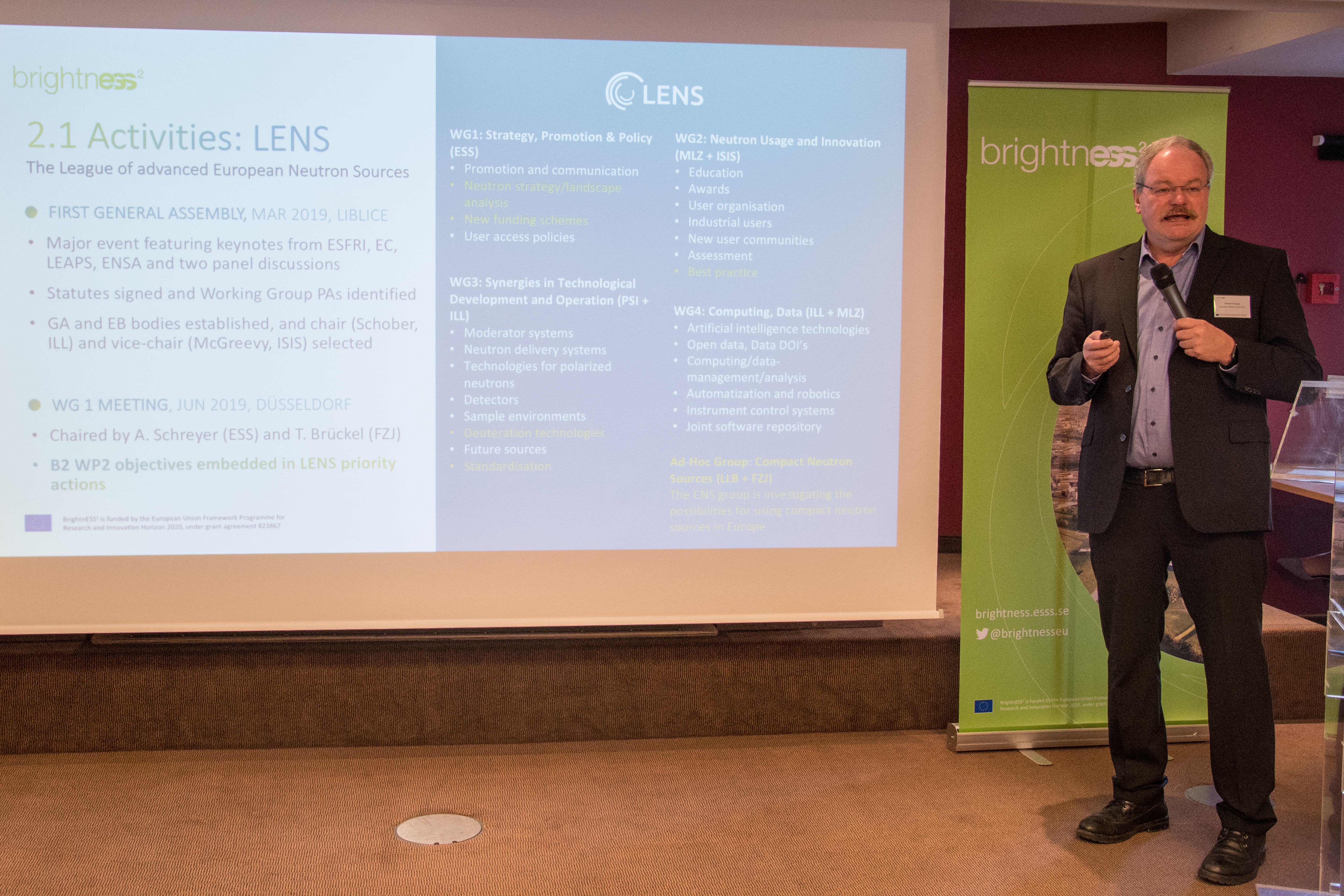 |
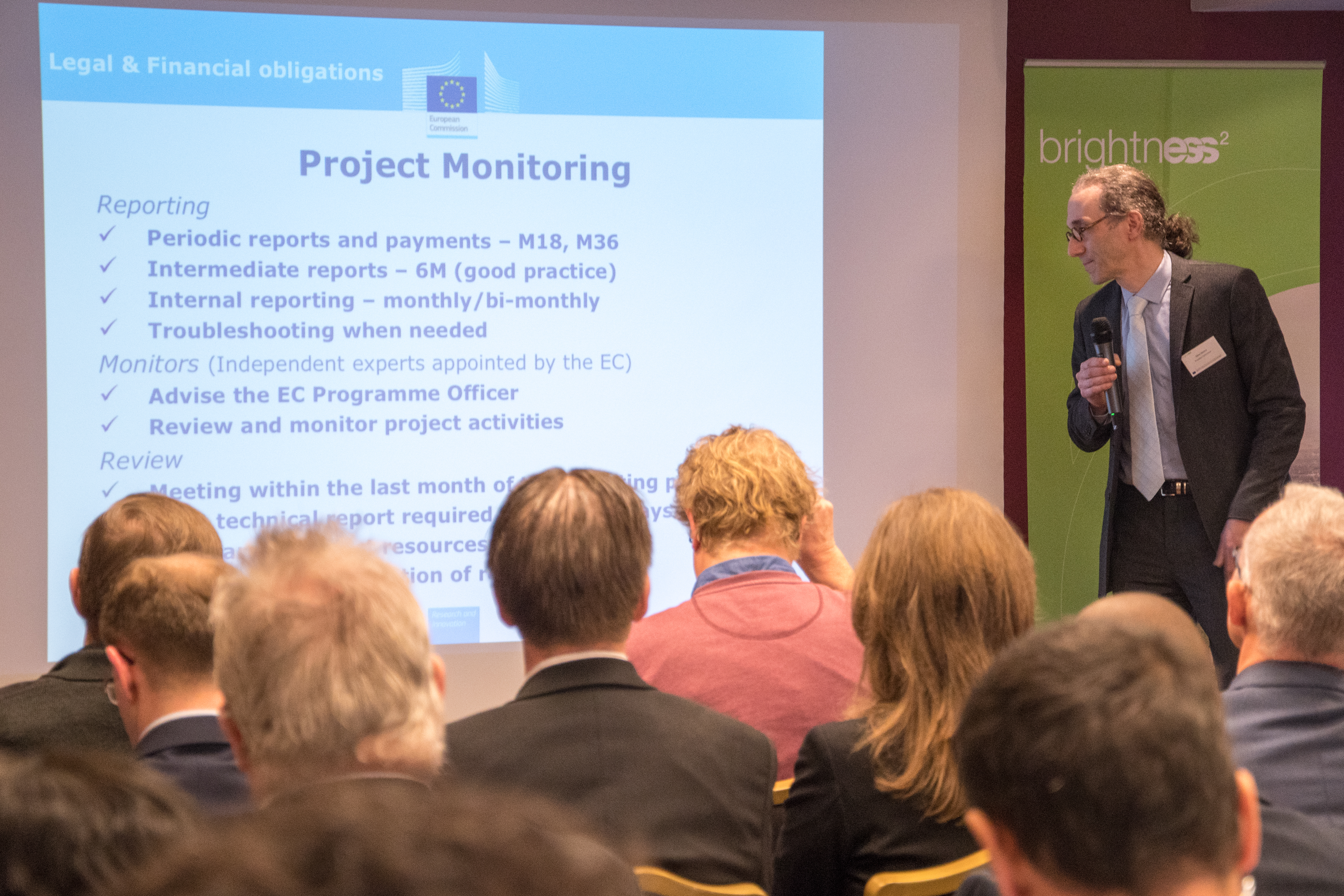 |
| Clockwise from top left: Ute Gunsenheimer (ESS), Lambert van Eijck (ENSA, TU Delft), René Martins (EC) and Andreas Schreyer (ESS). PHOTOS: Lenka Petková/ESS | |
Impact assessment and the global user community
BrightnESS² Project Coordinator Ute Gunsenheimer, who also leads the work package on international outreach, community engagement and dissemination for impact, gave updates on several important initiatives underway. Among these are the enlargement activities on behalf of ESS and the European neutron community generally, which include courting neutron users in Canada, South Africa, Israel and other non-European nations who can benefit from Europe’s world-leading capacity and knowledge.
BrightnESS² efforts have been effective in facilitating two-way exchanges that increase the involvement of neutron scientists from different geographic areas in the other’s scientific community. ESS, ILL and LENS participated in a recent roundtable on neutron science and policy in Canada, and BrightnESS² is sponsoring a major meeting among European and Israeli neutron scientists in Israel next month. Meanwhile, two South African neutron scientists, Peane Maleka of Cape Town’s iThemba LABS and Andrew Venter of Pretoria’s Necsa facility, both joined the meeting in Brussels to give the assembly updates on their BrightnESS²-sponsored scientific activities at home and in Europe.
Finally, Danish Technical University professor of entrepreneurship Jason Li-Ying gave an indication of how the impact of all of this activity will be assessed in the future. One of BrightnESS²’s many important deliverables is to establish a framework for assessing the socio-economic impact of ESS. Li-Ying presented the methodology in progress for establishing which key performance indicators will be adopted, and made clear the complexity of turning a data-heavy process into meaningful metrics for decision-makers and society at large.
BrightnESS² will continue through December 2021.


